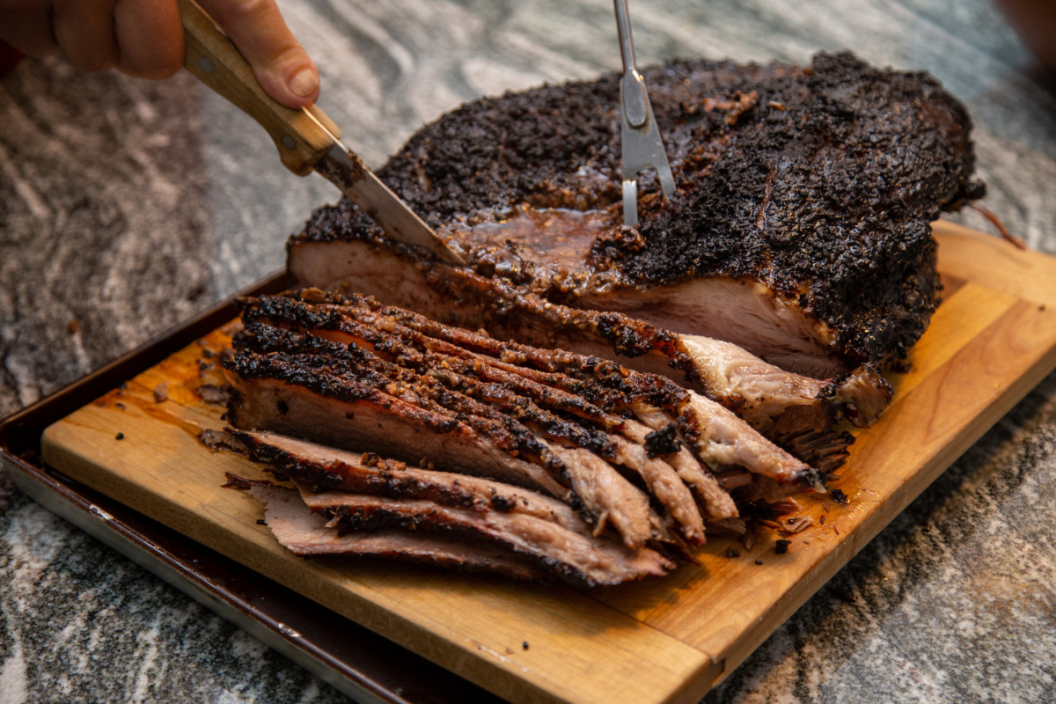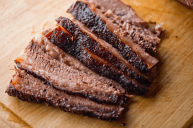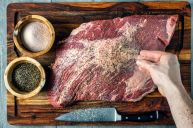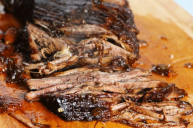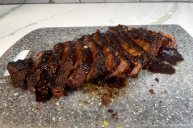Ask any Texan, and they'll proudly tell you that the Lone Star State is THE barbecue center of the United States. While Texas grillmasters make stellar ribs, sausages, and pulled pork, Texas BBQ is most famous for one particular dish: smoked brisket. This thick cut comes from the breast and pectorals of the cow, and because it includes connective tissue, it was once discarded as a tough throwaway. However, enterprising Texans realized that when slow-smoked at a certain temperature with a few other classic brisket tips, brisket transforms into a tremendously flavorful and tender dish.
Videos by Wide Open Country
If you're looking to fire up your smoker and make some perfect Texas-style brisket this summer, follow these brisket tips from top-tier Texan pitmasters Blaine Cooper of B. Cooper BBQ in Austin, Evan LeRoy of LeRoy and Lewis in Austin, and Patrick Feges of Feges BBQ in Houston.
1. Pick a smoking wood with a mild flavor.
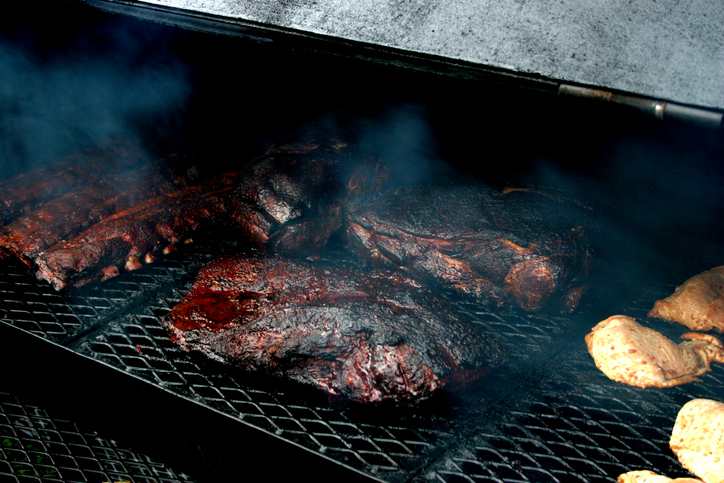
Getty Images
While pitmasters at Texas BBQ restaurants and food trucks use large-scale propane smokers that hold full logs of wood, Cooper acknowledges that "most people who smoke at home use wood chips" in their smaller smokers. Whether you're using chips or logs, pay close attention to the type of wood that you select, as different woods will impart different flavors. Most Texas BBQ joints—including Terry Black's and B. Cooper—use post oak, a type of white oak that delivers a mild and gently-sweet flavor when smoked. If you can't access post oak where you live, any other type of white oak will give you a similar flavor. Other alternatives (which all bring their own unique flavor notes and strength levels) include pecan, mesquite, hickory, apple, or maple. Play around with a few different smoking woods and find the one that suits you best.
2. Look for a boneless brisket with plenty of marbling.
Delicious smoked brisket requires high-quality meat, so you'll want to know exactly what to ask for when you head to the butcher shop. Cooper recommends sticking with prime brisket (as opposed to the slightly lower grade-and lower-priced-choice brisket); since smoked brisket doesn't include heavy seasonings, "it's worth investing in a higher-quality cut."
As far as details are concerned, LeRoy has some helpful pointers: "I like a brisket between 11-13 lbs. Anything bigger will take a super long time, and anything smaller might not have all the fat you want and might not feed enough people." When you walk up to the butcher counter, LeRoy advises asking for "brisket, boneless, deckle [a dense mass of fat on the side of the brisket with thick fat and connective tissue, also known as the 'point'] on."
He explains that these instructions mean that it won't have the bones attached (less trimming), and the cut will include both muscles that make up the brisket: the flat and the point. Ask to look at the flat side of the brisket (which is the meatier side covered with a thin layer of fat, known as a "fat cap"). LeRoy tells us that "a good brisket will have visible marbling in the flat. This good marbling will come with some choice briskets, most prime briskets, and definitely with Wagyu briskets. As with most things, the higher quality will usually mean a higher price."
3. Trim the brisket to perfection.
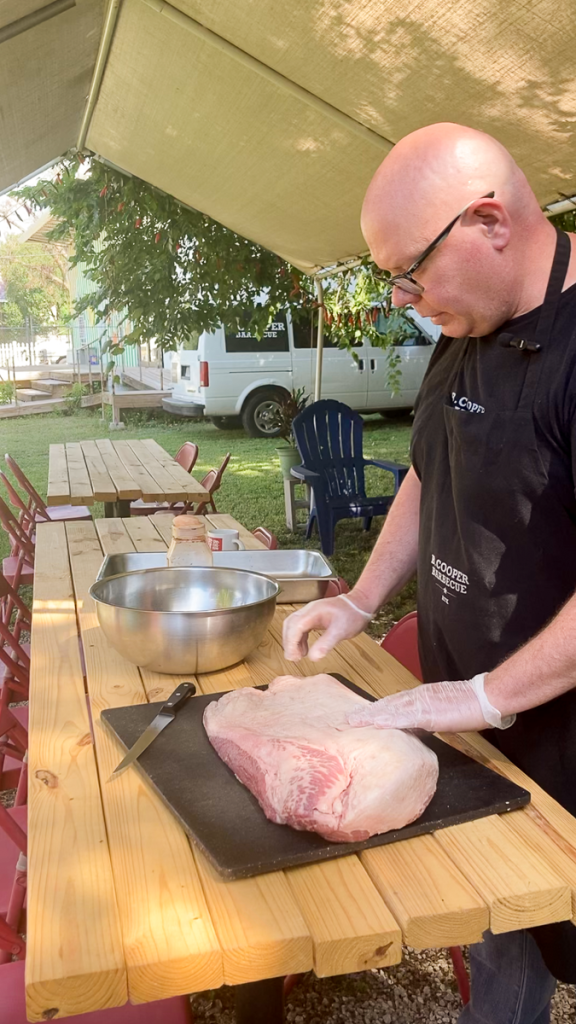
Alexandria Ellison
Read Wide Open Eats' guide to trimming a brisket to learn how to get your brisket in ideal shape for the smoker.
4. Keep your seasonings very simple.
When we asked the Terry Black's BBQ chefs what seasonings they use on their brisket, we got a very simple answer: "Salt and pepper. That's it." LeRoy also insists that there's no need to gild the lily with elaborate marinades or spice blends. "I prefer a simple seasoning rub of salt and pepper. Typically, marinating is best used for very thin cuts, so that is not what you want to do with a brisket," says LeRoy. At most, a light dusting of paprika or cumin can work nicely with the brisket's natural flavor. But for real Texas-style smoked brisket, stick with regular salt and pepper.
5. Smoke your brisket at a low temperature, but not too low.
YouTube is filled with videos in which aspiring brisket masters brag that their brisket has been on the smoker for 24 hours or more and that they're smoking the meat at a very low temperature to enable that long cook time. However, brisket tips from the experts would tell you to do otherwise. LeRoy tells us that, most people cook barbecue way too low. "225 degrees Fahrenheit is way too low for me to cook brisket," he says. "I like to aim for 275-300 degrees, or a bit lower when working with a smaller pit." When working with a small pit, try 250 degrees Fahrenheit; that's Feges' baseline temperature, which he adjusts depending on the outside temperature, humidity, and the dryness of the wood.
6. 1.5 hours per pound is an easy rule of thumb for cook time.
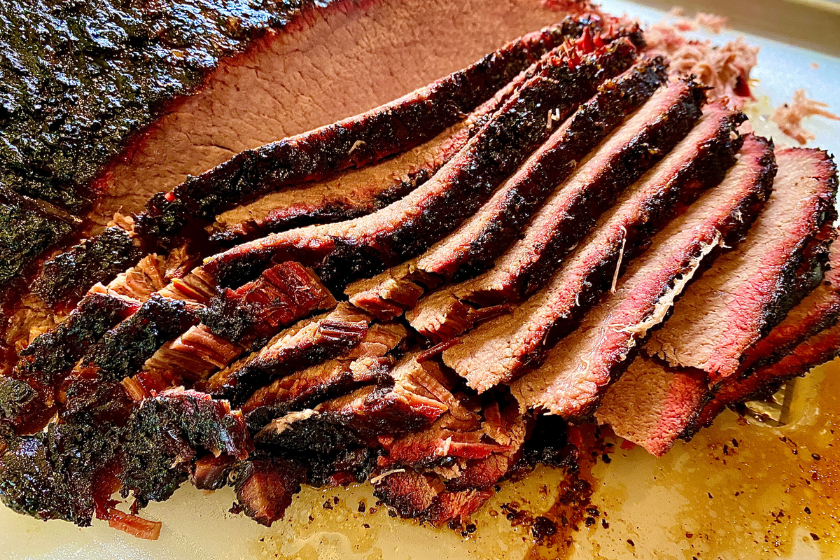
iStock/Getty Images
As we mentioned previously, you don't need to keep your brisket on the smoker for days at a stretch. In fact, LeRoy and Feges both agree that 1.5 hours per pound is an excellent way to determine your total cook time. For an 11-pound brisket, that's 16.5 hours on the smoker.
7. Toward the end of the cooking time, wrap the brisket to seal in moisture.
During the last quarter of your cook time, try wrapping the brisket in parchment paper. Cooper swears by this method as a great way to seal in flavor and moisture. While some pitmasters use foil for wrapping, Cooper opts for parchment paper because it allows the brisket to breathe.
8. Always allow the brisket to rest before cutting into it.
It's easy to understand why someone might feel tempted to slice into their brisket right after they take it out of the smoker. However, our experts unanimously urge you to take the time to let the brisket rest. "You want to rest your brisket at least 3 hours. If you slice it while it's still too hot, the juices will just run out, and you'll be eating dry brisket. When you take it off the smoker, let it sit on the counter for about an hour. Then, place it in a pre-warmed cooler and let it rest for a few more hours. Just keep it at an internal temp above 140 degrees Fahrenheit," says Feges.
If you can't bear the thought of setting your timer yet again, this shorthand way of resting your brisket-courtesy of LeRoy-could be a useful option: "My main rule of thumb when resting is that if it's too hot to hold indefinitely, then it's too hot to cut. If you can hold your brisket and it's nice and warm, but not too hot to hold, you can cut into it."
9. Use the right knife to slice the finished brisket.
This is a brisket tip that's super easy to take care of, but also easy to forget. To get the cleanest, juiciest slices of brisket, set aside the boning knife and instead cut the smoked meat with a "long, serrated slicer," says LeRoy.
